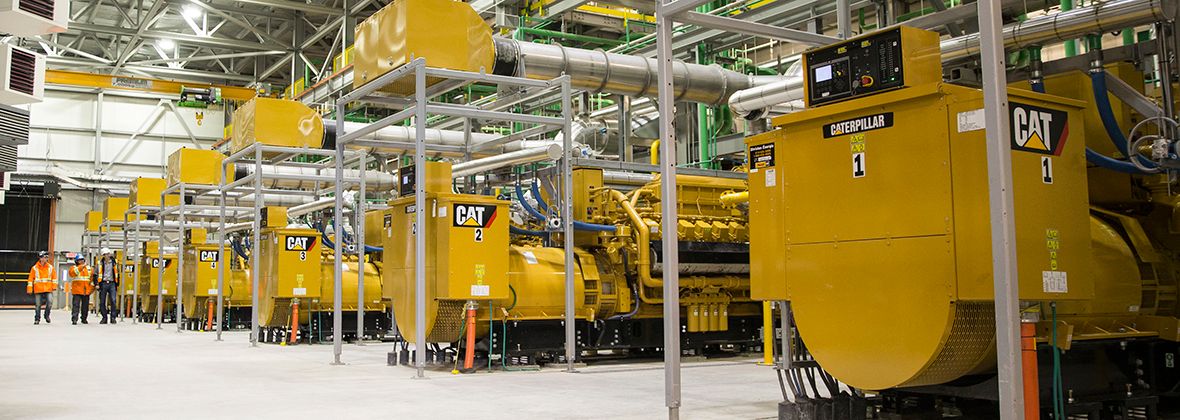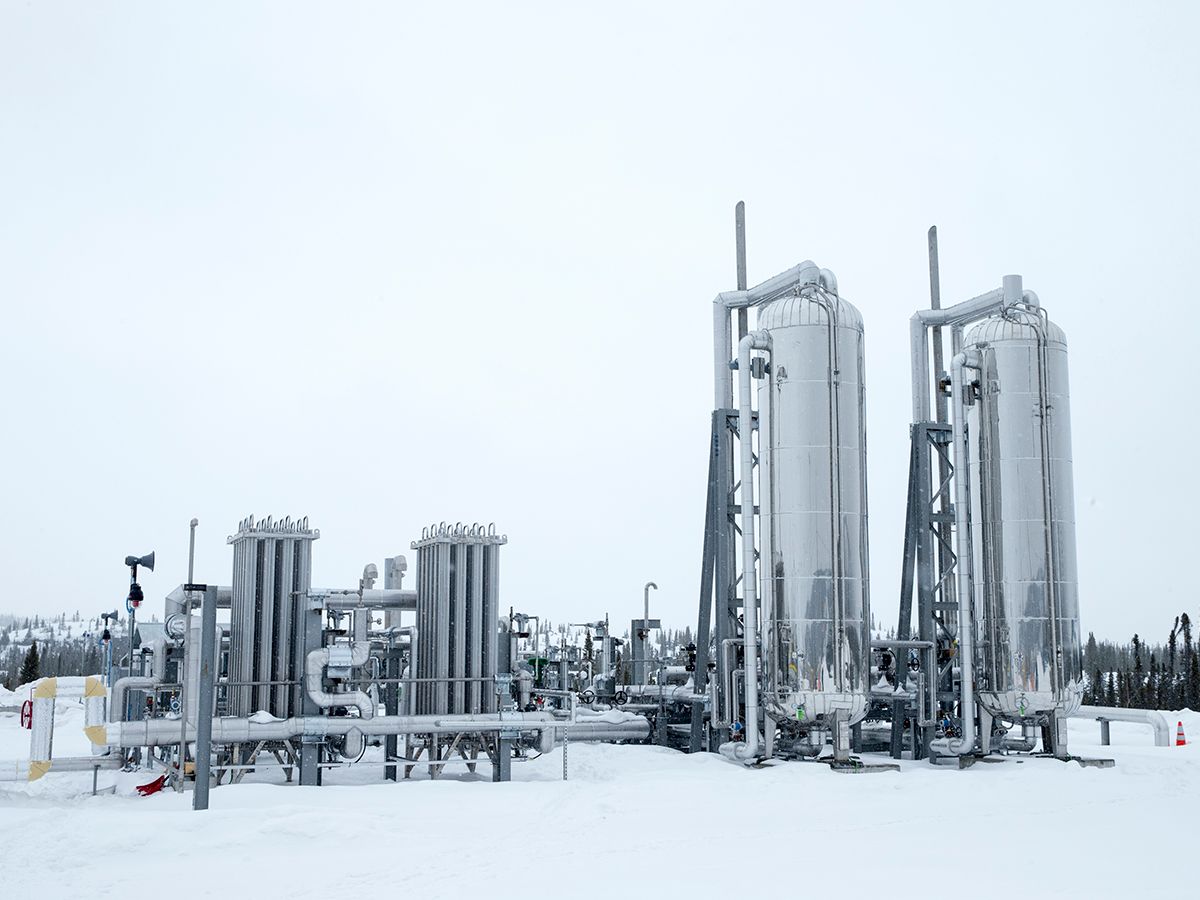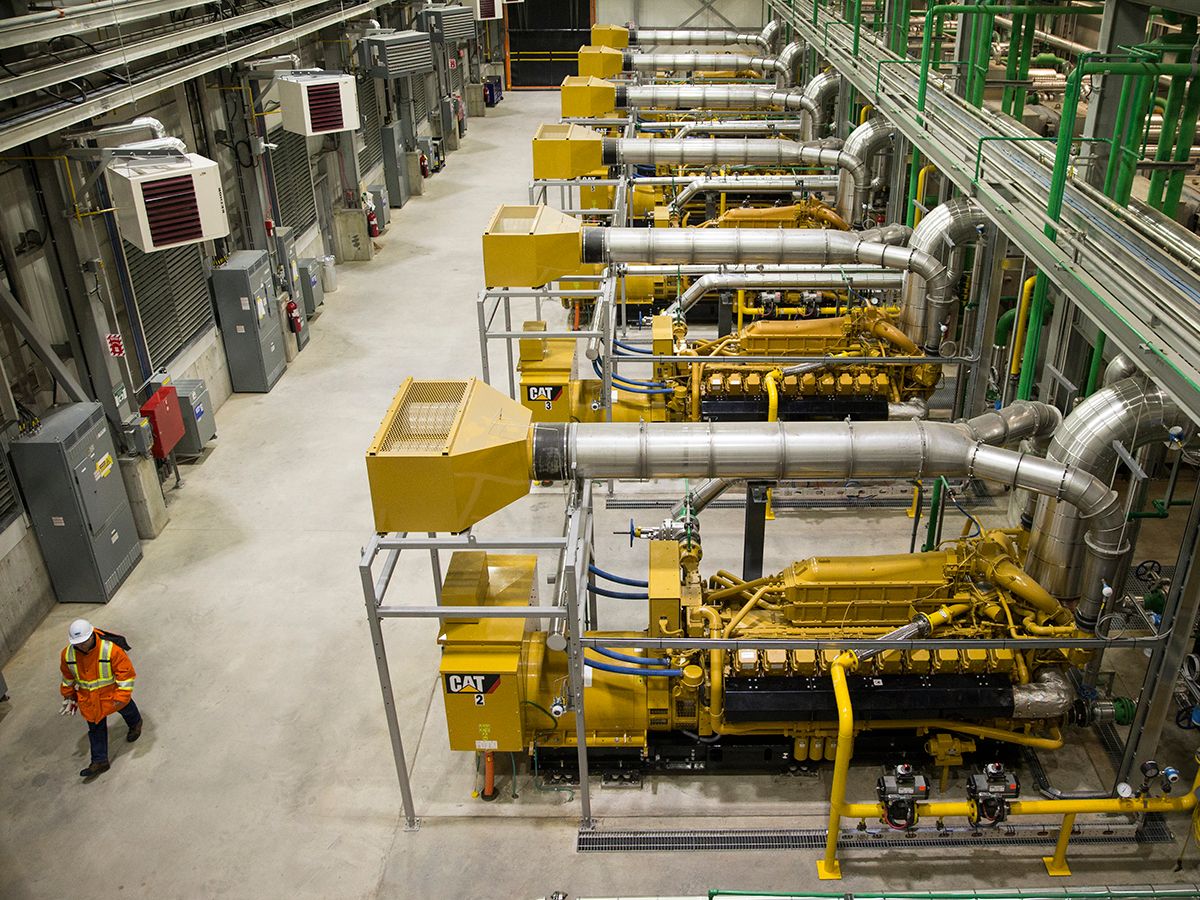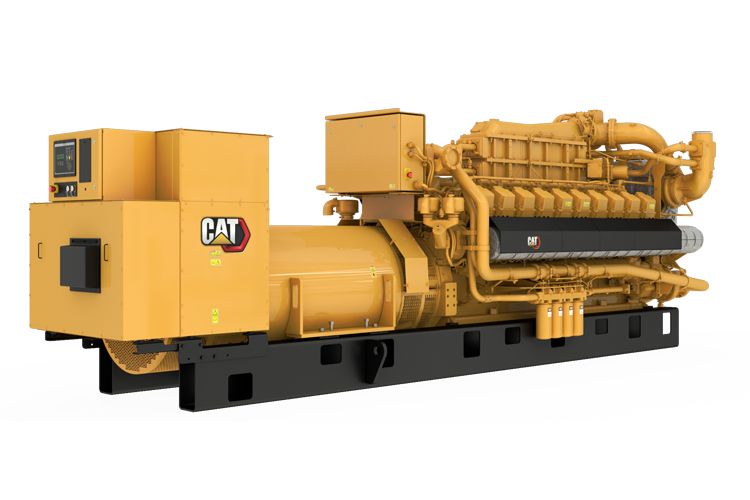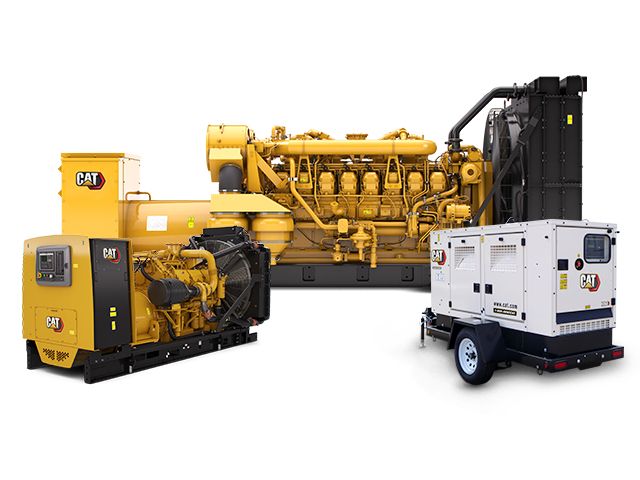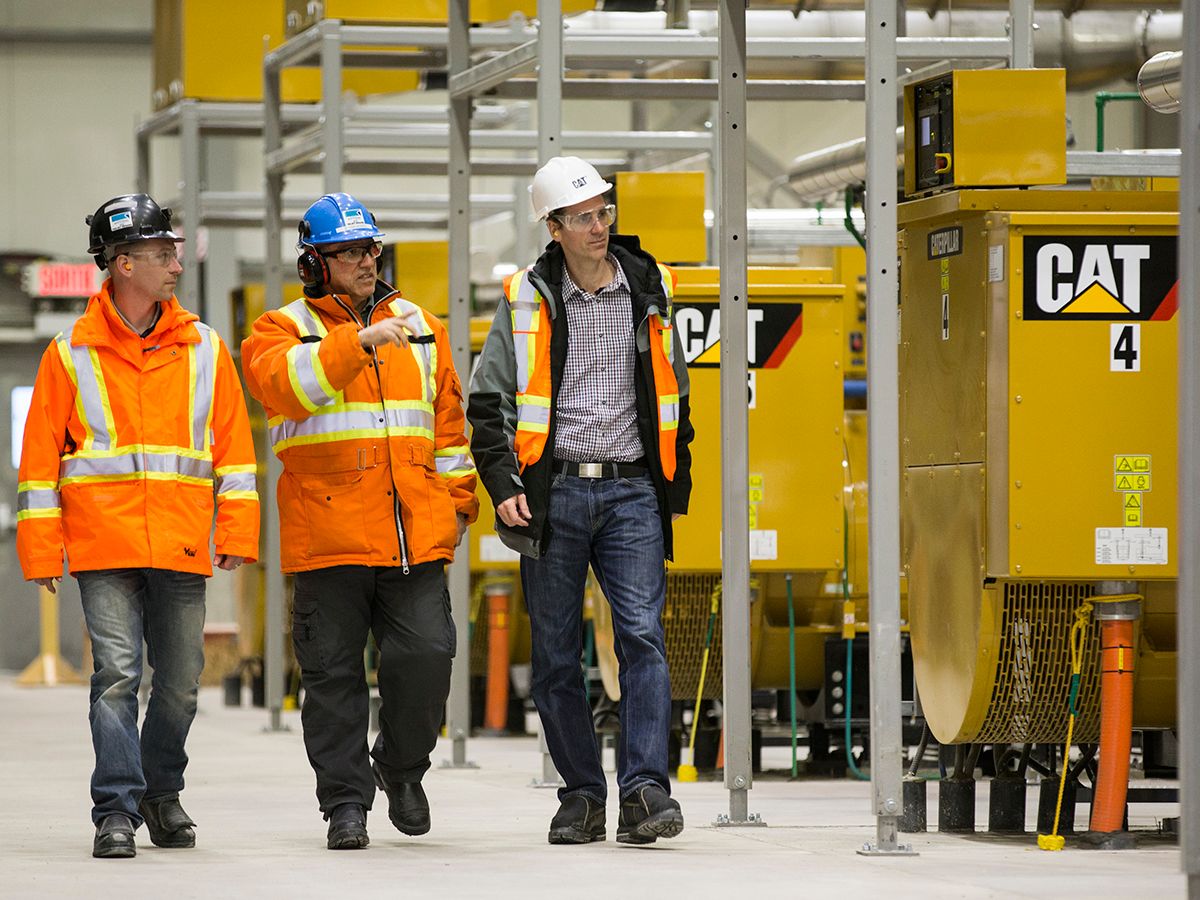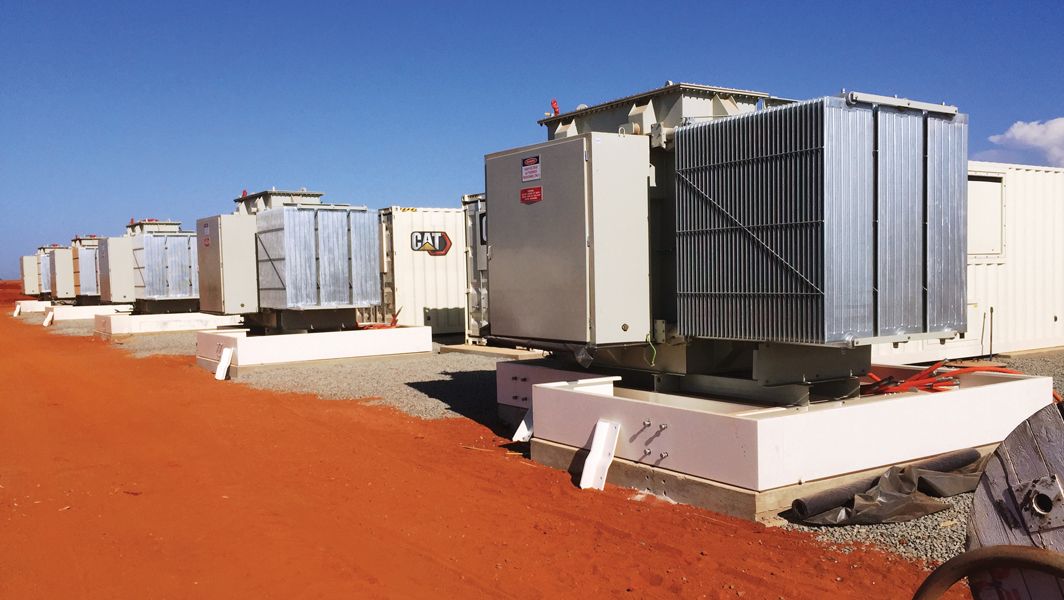POWER NEED
Stornoway Diamond Corporation operates Renard Mine, the first diamond mine in Quebec, and one of only six in Canada. It started as an open pit and eventually expanded to include an underground mine. Stornoway processes 2.1 to 2.5 million tons of ore and produces 1.6 to 2 million karats of diamonds each year.
The Renard mine has reached several milestones along the way to this achievement. Mine construction initially began in 2014 after the development of a direct-to-mine road and an airport, making it possible to get people and materials to the remote location.
The mine faced another hurdle when it came to finding the best way to bring power to the site.
SOLUTION
Early in the development of the mine, Stornoway had determined that on-site power generation was a viable solution to meet the mine’s power needs. “Initially, the project was forecasted to have a diesel power plant, which was straightforward and standard for this type of project,” recalls Patrick Godin, COO, and director of Stornoway Diamond Corporation.
But the company continued to investigate alternatives in an effort not only to combat its exposure to fluctuating diesel prices but also to reduce the mine’s environmental impact.
One potential solution — tapping into the Hydro-Québec power grid located just 160 kilometers (100 miles) south — would deliver economic benefits; however, those benefits would be largely offset by the high cost of powerline construction.
“While there could have been a connection to the utility power grid, that could have been a lengthy process, and a costly one, too,” explains Regis Drouin, a power generation expert at the local Cat dealer, Toromont Industries Ltd. (formerly Hewitt Equipment Limited). “So, the on-site power generation solution became one that needed to be examined further.”
The original power generation station, outfitted with Cat generators, turned out to be the right solution after all, with one exception: The generators would be powered by liquified natural gas (LNG) rather than diesel.
A feasibility study demonstrated the substantial benefits to the project in terms of operating costs and environmental emissions compared to the diesel genset option. The study concluded with the following results:
- Annual operating cost reductions of between $8 million and $10 million over the initial 11-year mine life, representing a life-of-mine operating cost savings of $89 million.
- Incremental capital cost of only $2.6 million over the cost of diesel gensets, representing a net payback of four months.
- An estimated reduction in greenhouse gas emissions of 43 percent, with significant reductions in nitrogen dioxide and sulfur dioxide.
- A stable LNG local supply market based on existing commercial distribution network within Québec.
While the use of LNG was a new idea for the Stornoway project, using LNG to power generators is a proven process, explains Drouin. “They are relying on proven technology as LNG is being used worldwide to power Cat gas engines.” The station is entirely fed with the natural gas produced onsite with the LNG from cryogenic storage tanks on site.
RESULTS
The power generation plant at the Renard mine is now the first gas power plant in Canada and the first to operate on LNG. Stornoway worked with Toromont Cat to initially install seven Cat G3520C generators, each producing 2 megawatts (2682 horsepower) of electric power in March of 2017. At the end of 2017, an eighth G3520C identical to the initial seven, was installed bringing total installed power to 16 MW.
Drouin stresses how Stornoway has ensured the reliability of the power on site. “They can count on a permanent gas power station, but there is also a standby temporary peakingbstation comprised of three Cat 3516B dieselbgenerator sets that can produce up to six megawatts of standby power,” he says. “This provides emergency power for all facilities on site.”
Godin calls the power generation solution a success — for the mine, for the environment, and for the people who live in the community. “We’re reducing our greenhouse gas emissions by 42 percent,” says Godin. “That’s huge. We’re talking about 23 thousand tons greenhouse gas per year.”
About 27 percent of the greenhouse gas reduction comes from the use of LNG in the generator sets themselves. An additional 15 percent reduction comes from the plant’s use of combined cooling, heating and power (CCHP) which captures the warmth from the engines to heat the underground mine.
“Here, in winter, it’s negative 30, negative 40 degrees Celsius,” says Godin. “If we can recover this heat, compared to using propane, natural gas or diesel to heat the underground mine, it’s a huge advantage.”
It’s also better for the environment. “We recover the heat instead of discharging it into the air,” explains Hécine Ramoul, the mine’s power plant foreman. An additional benefit is the safety of transporting LNG over diesel fuel. “In a leak, it will evaporate and won’t go into the water table,” says Ramoul. “It reduces our environmental impact and reduces the risk to our stakeholders.”
When completing this project, it was important for Godin to provide stakeholders with noticeable cost savings. “You need buy-in from all the stakeholders,” he says. “The fact that we found the best technology that can be better for the environment and improve the balance sheet — that’s a win-win deal.”
Stornoway purchased their units with the assistance of Cat Financial. Stornoway’s financing package is made up of a series of transactions including equity, a diamond stream, project debt facilities, and the equipment financing facility provided by Cat Financial. Whatever your needs, Cat Financial has the financing solution that will help you expedite your purchase and get your equipment on the job, fast.
Download the Power Profile


